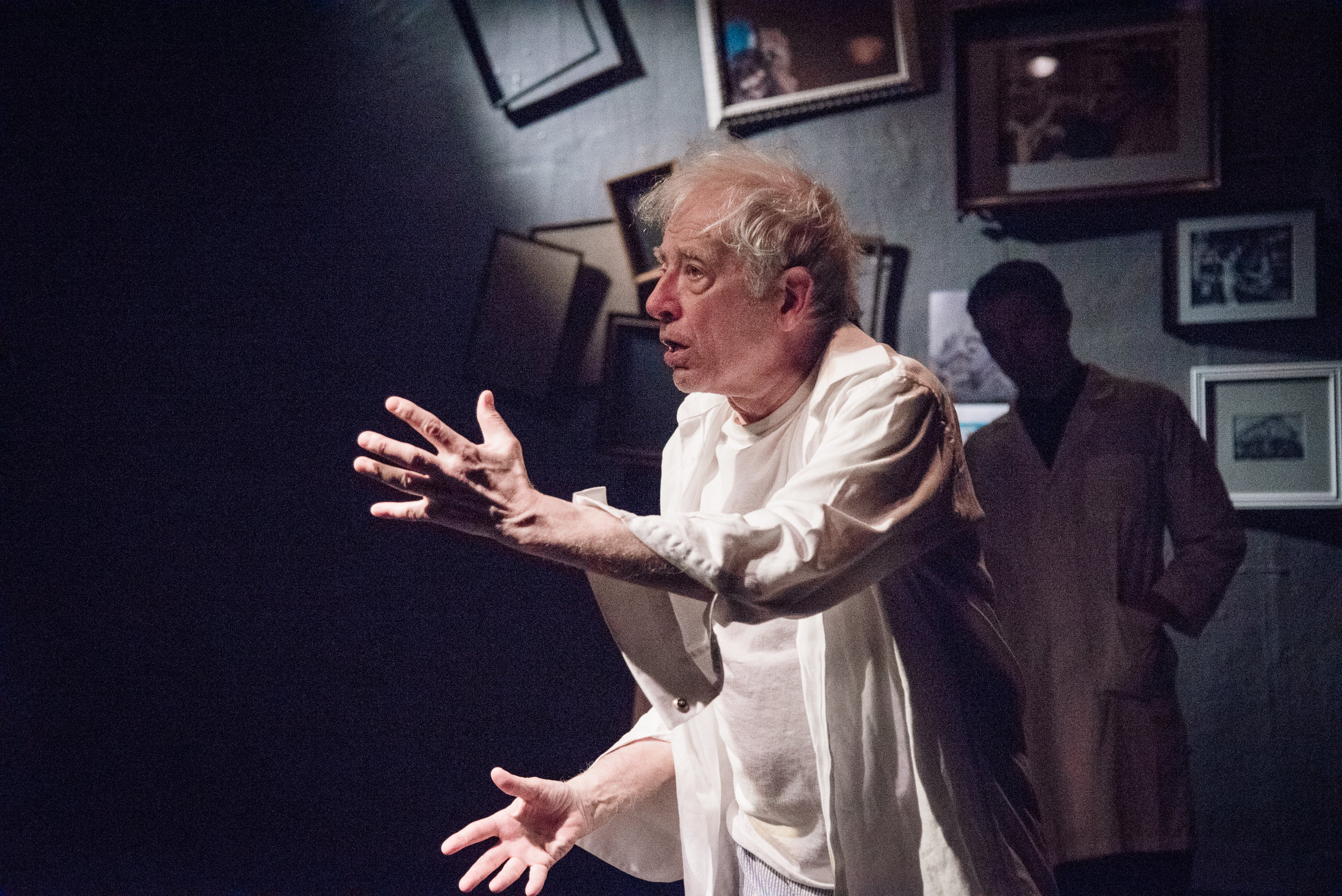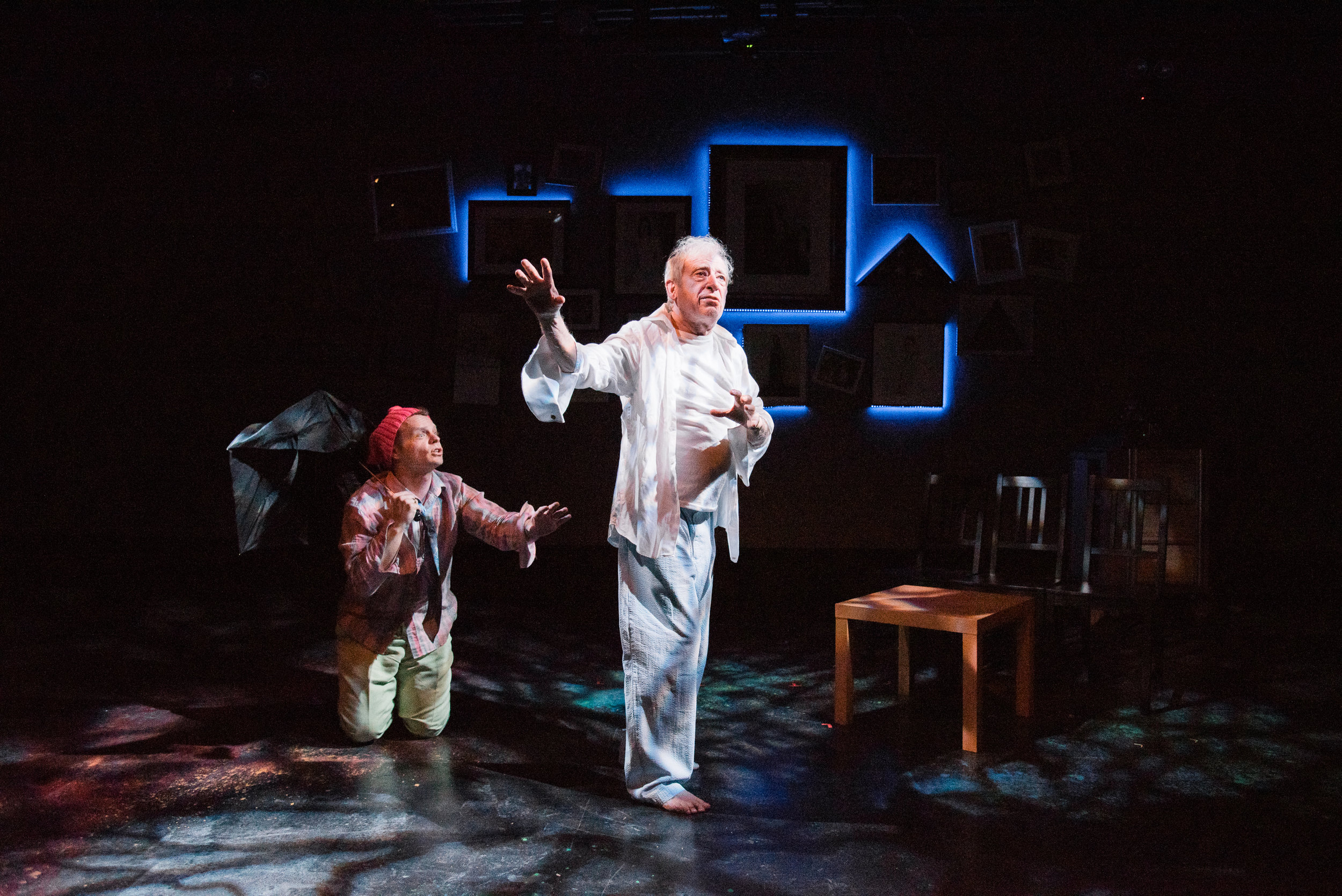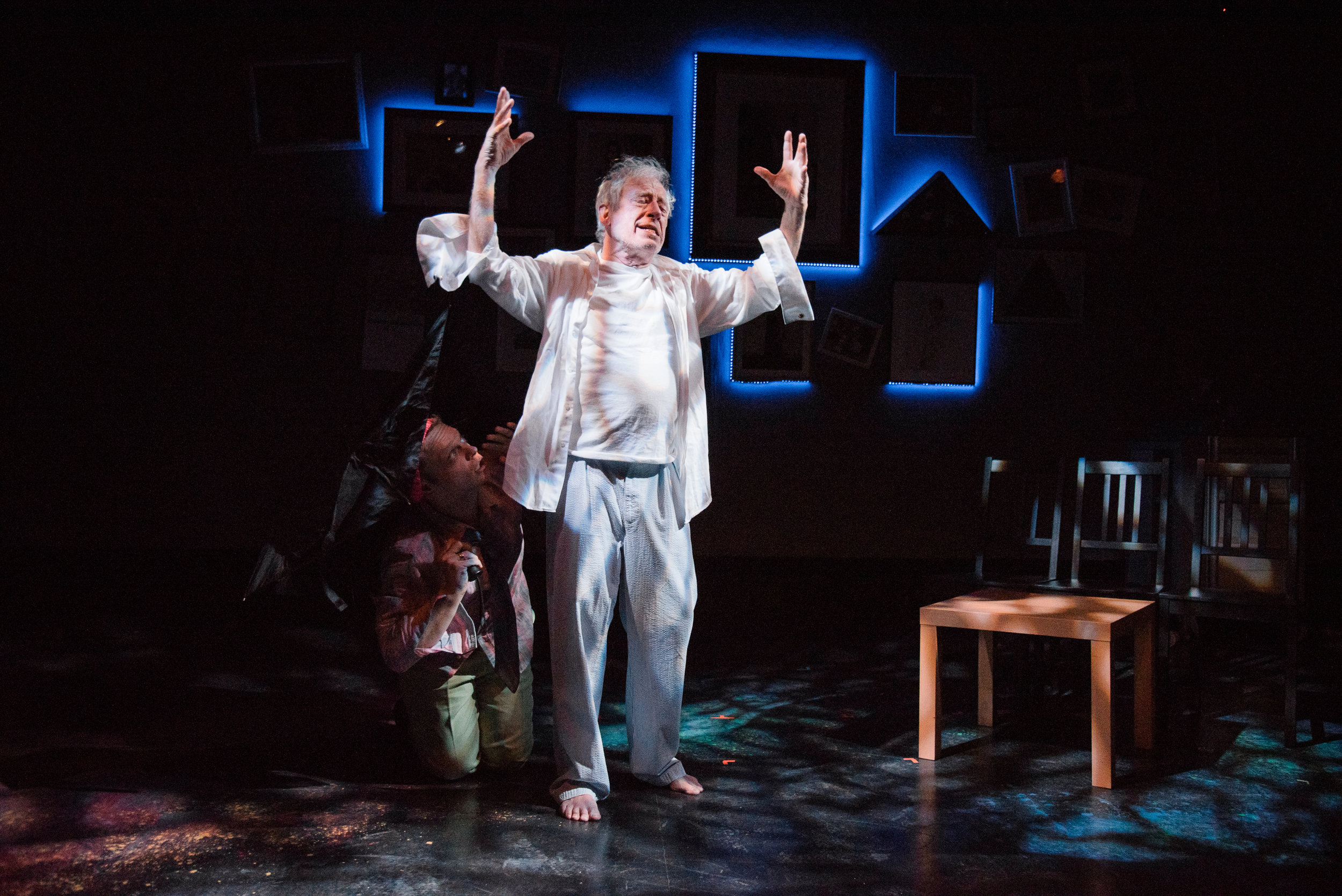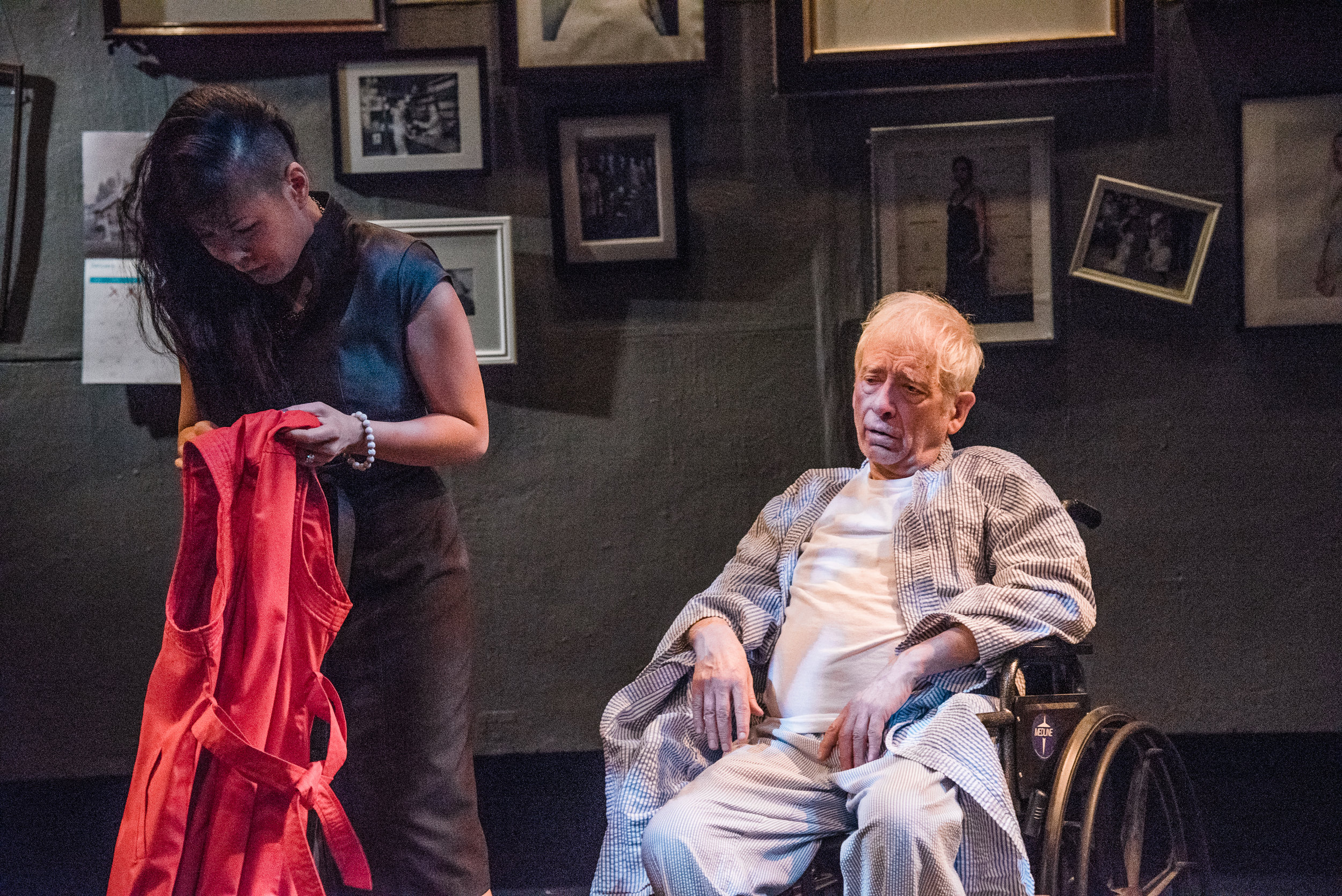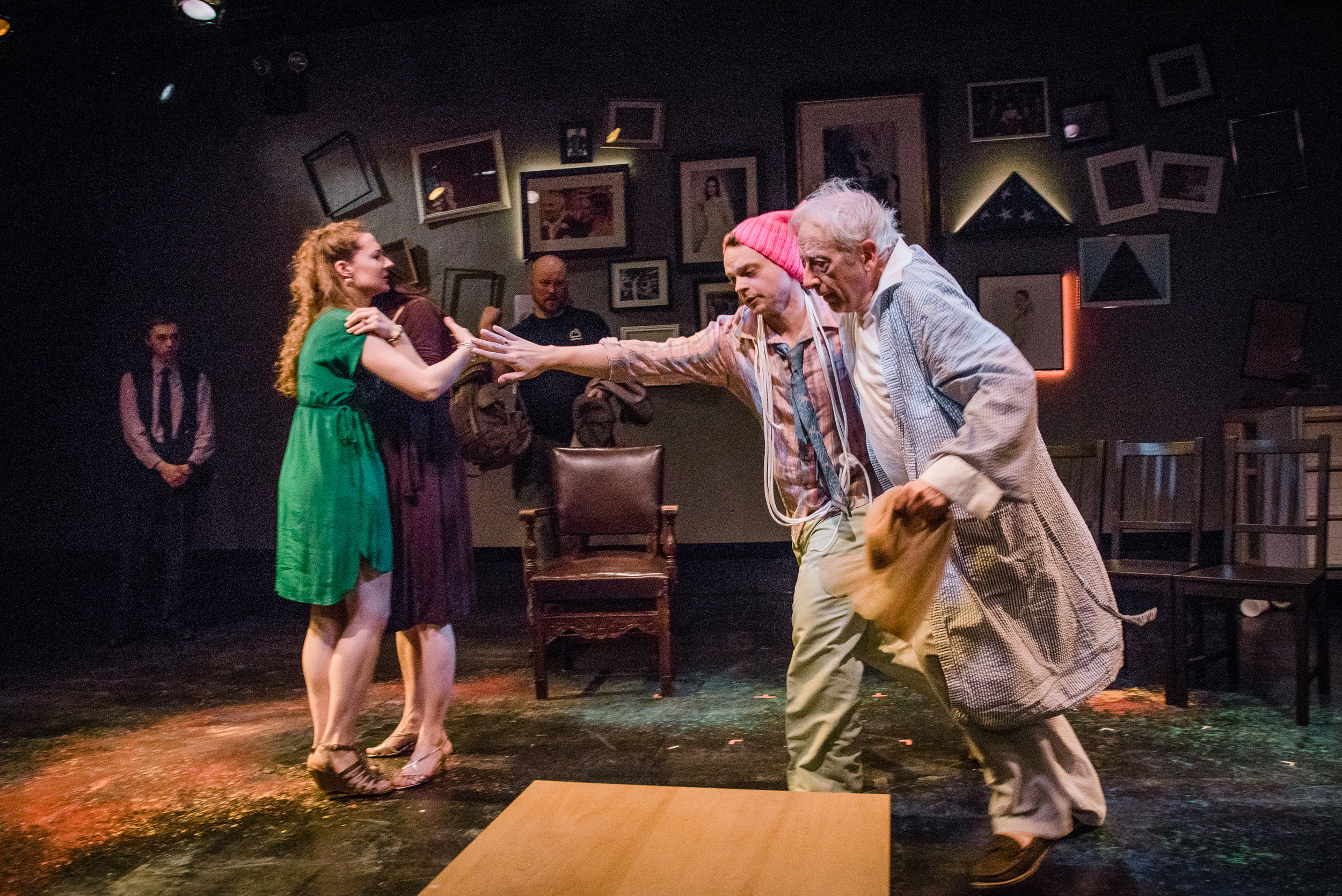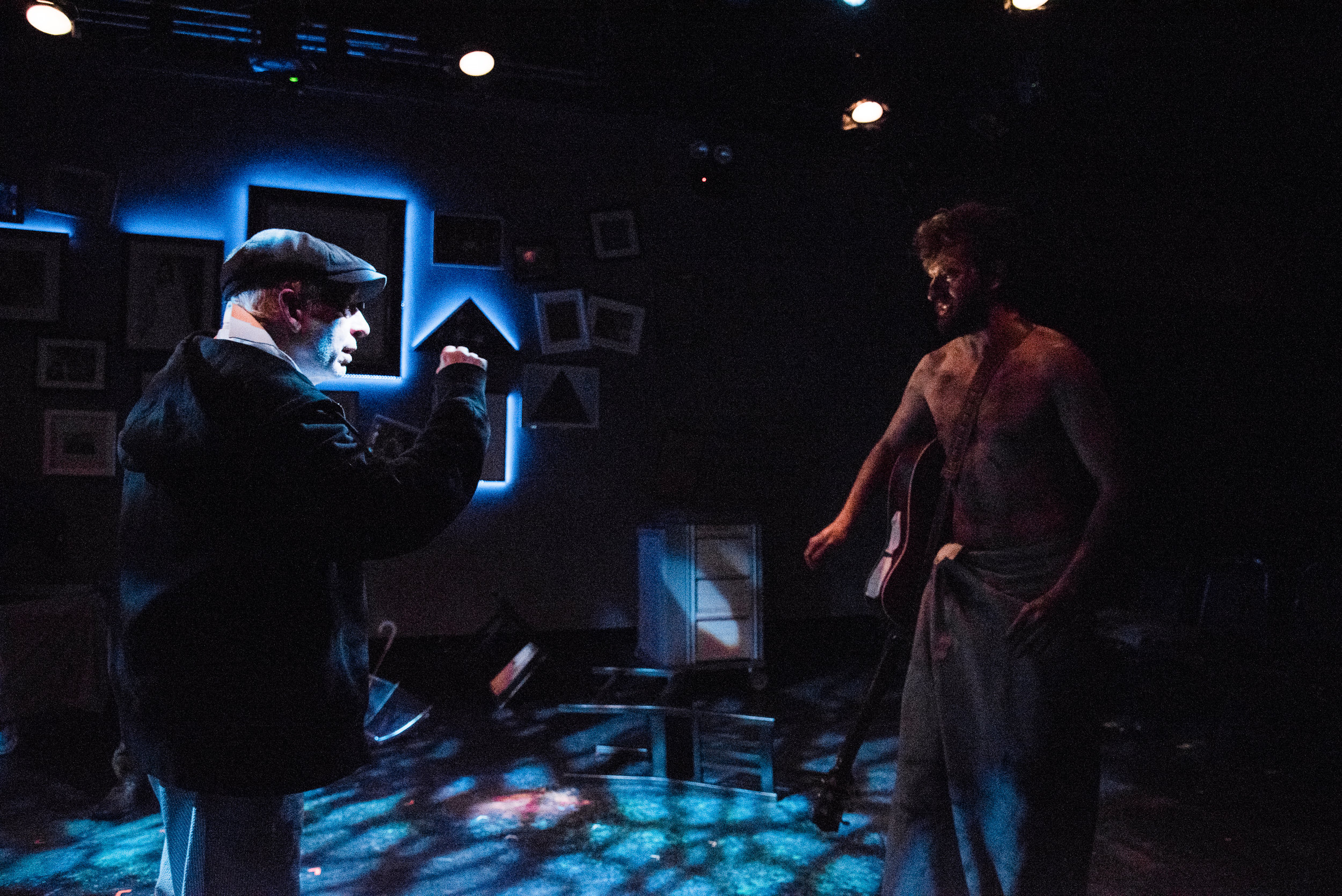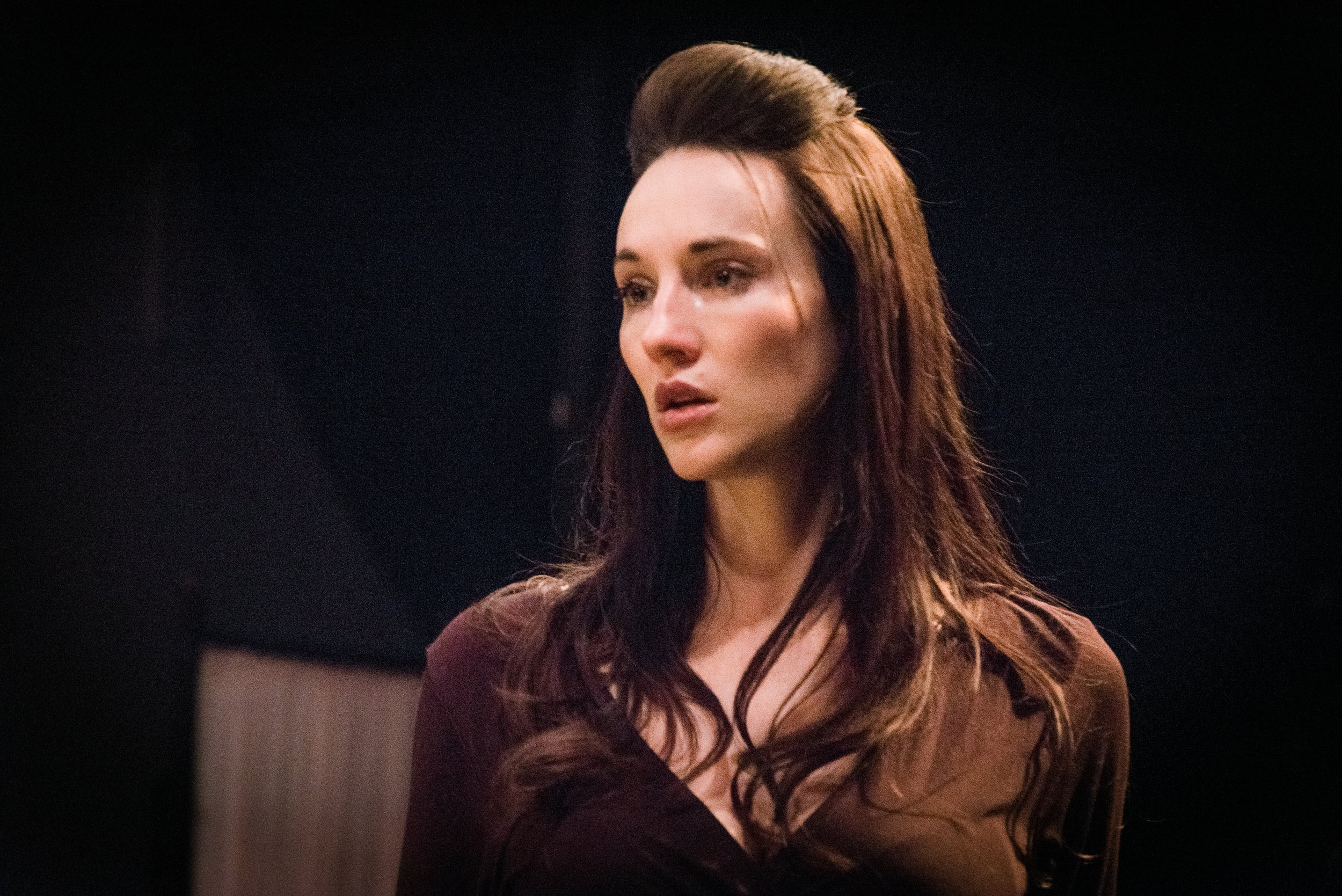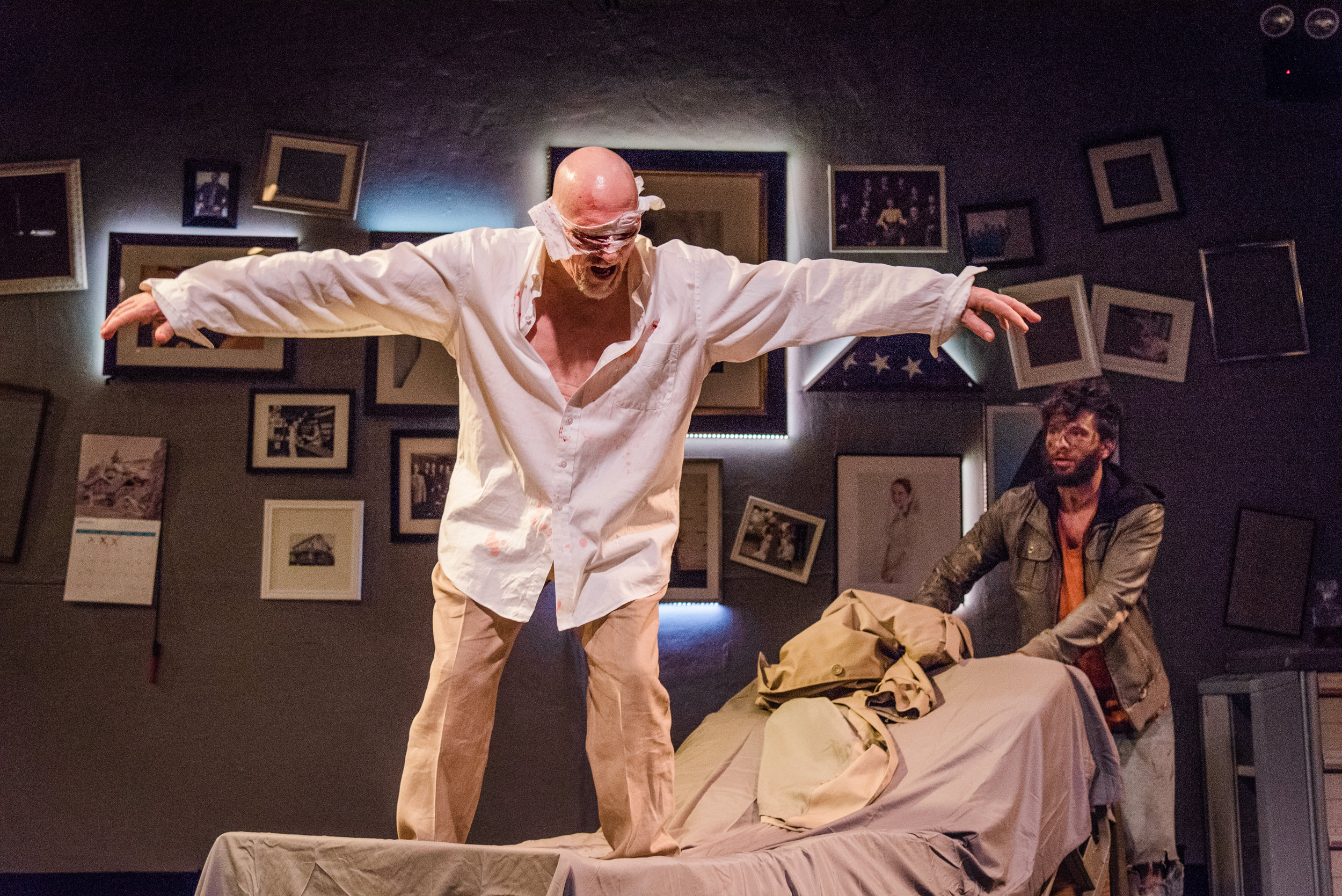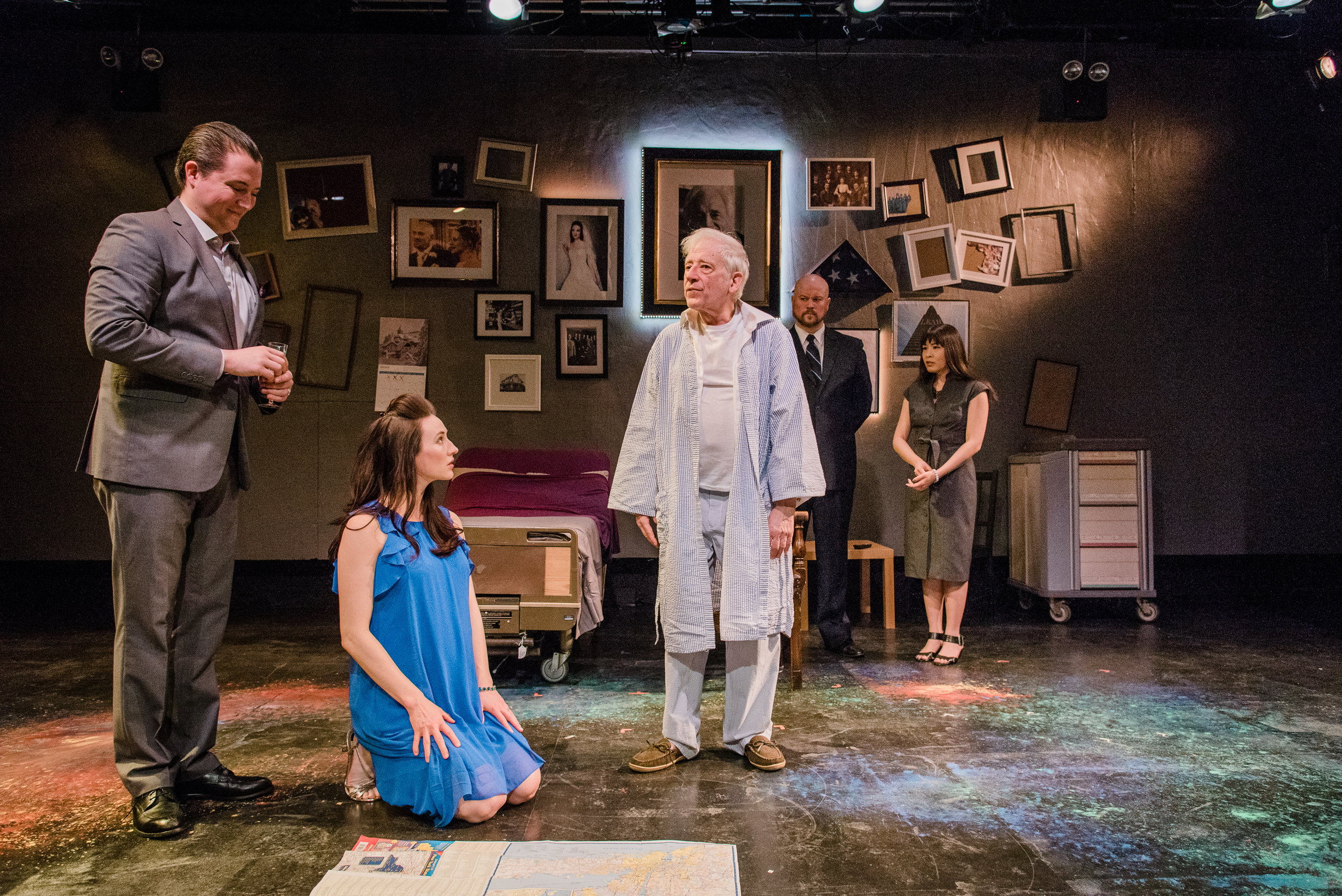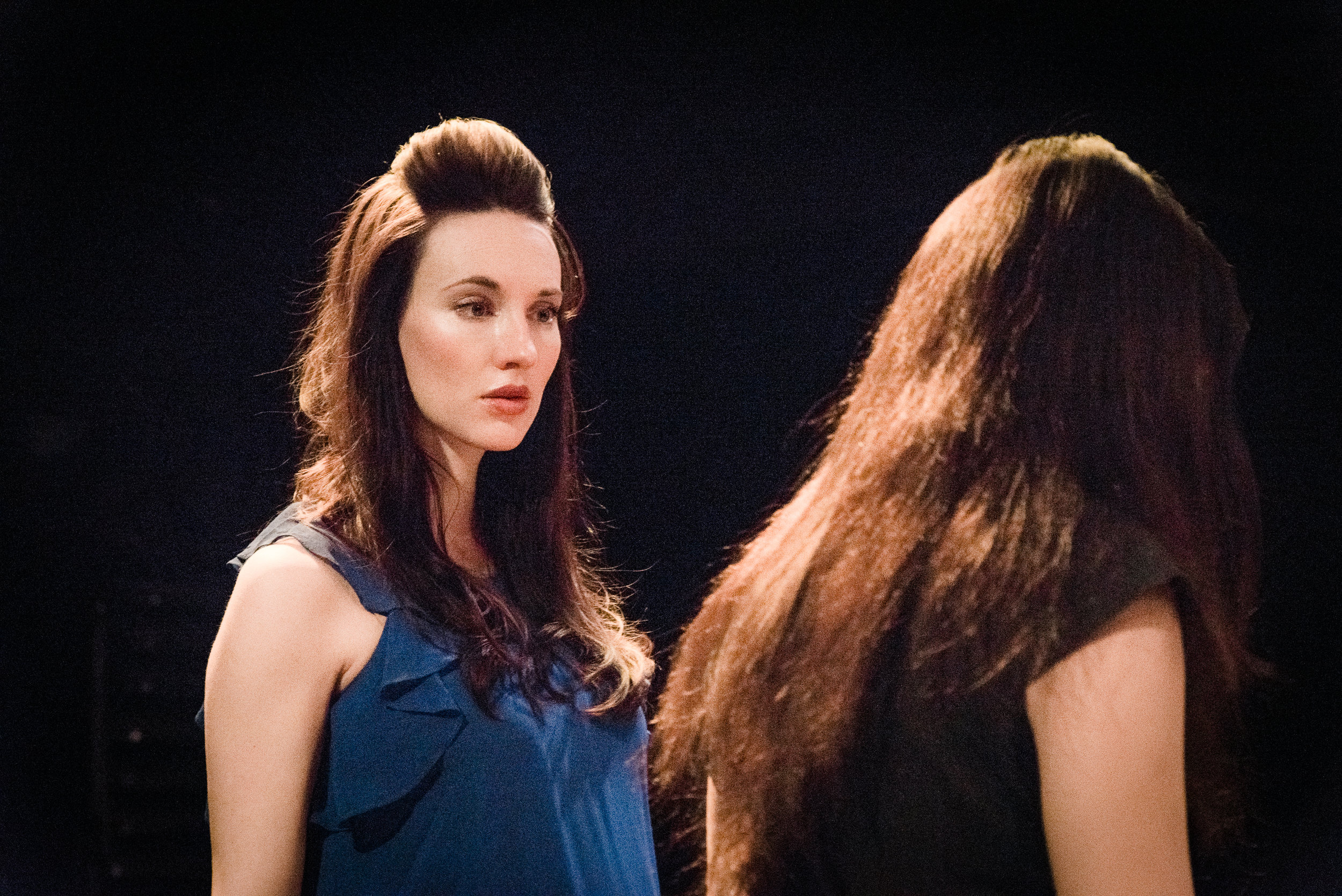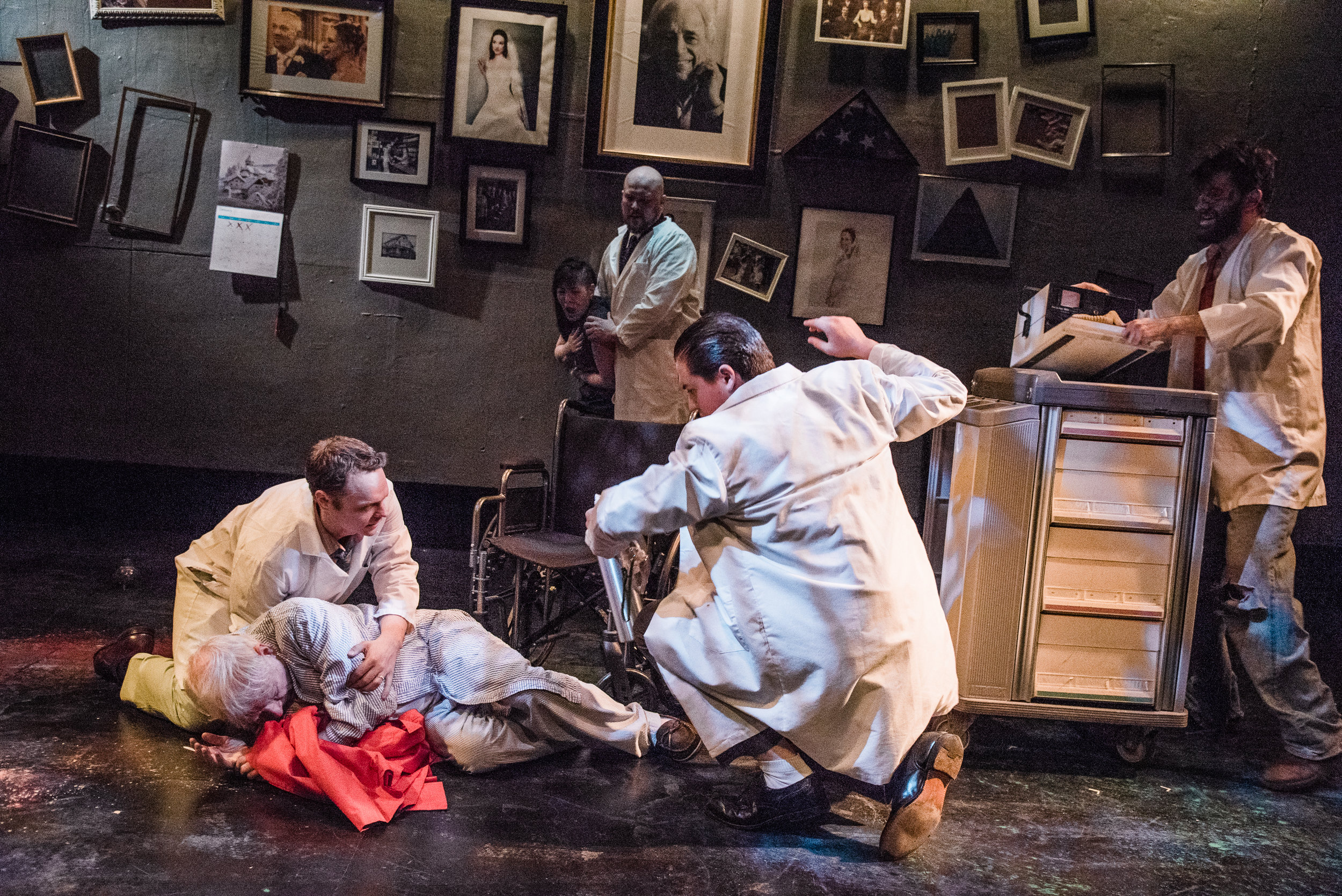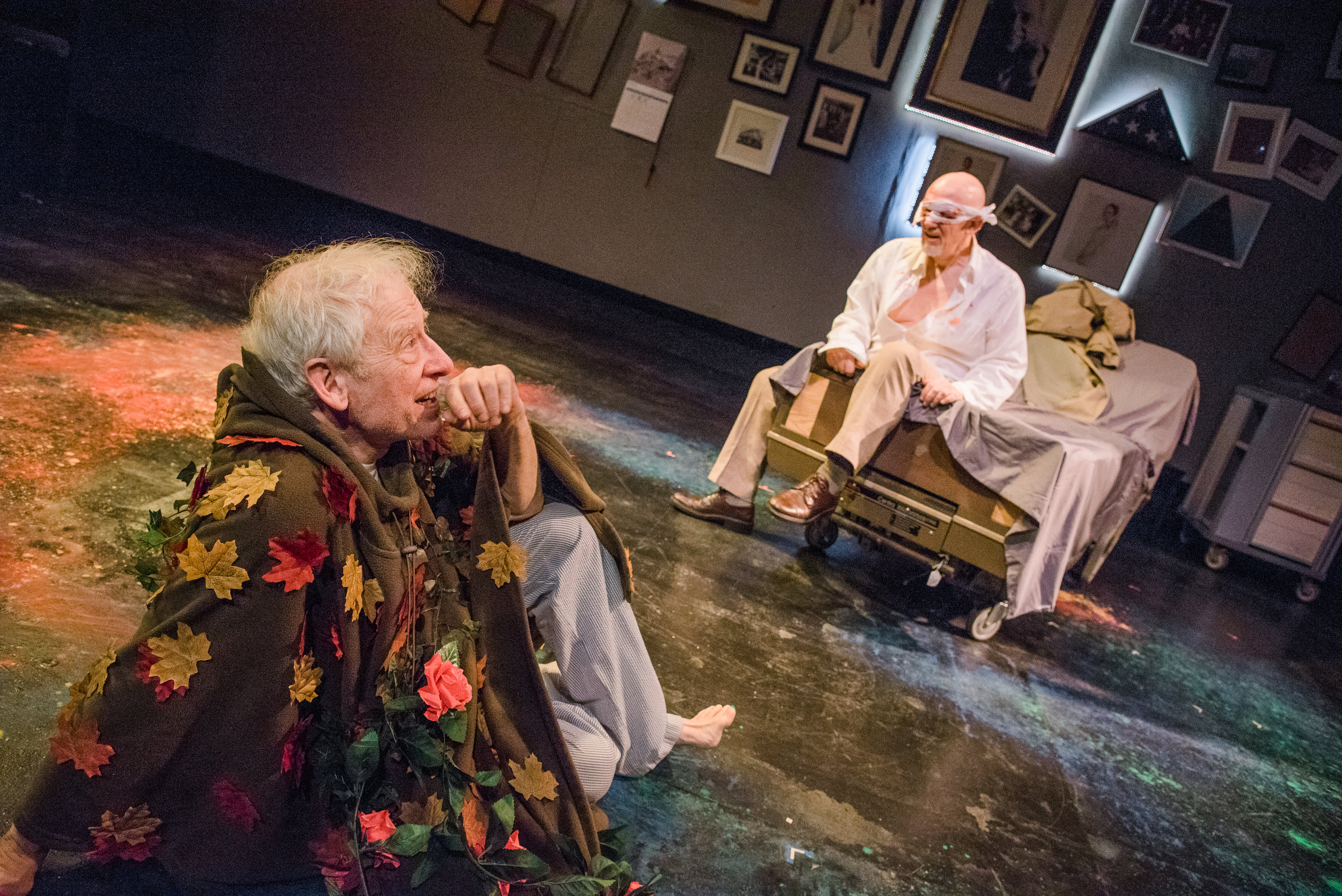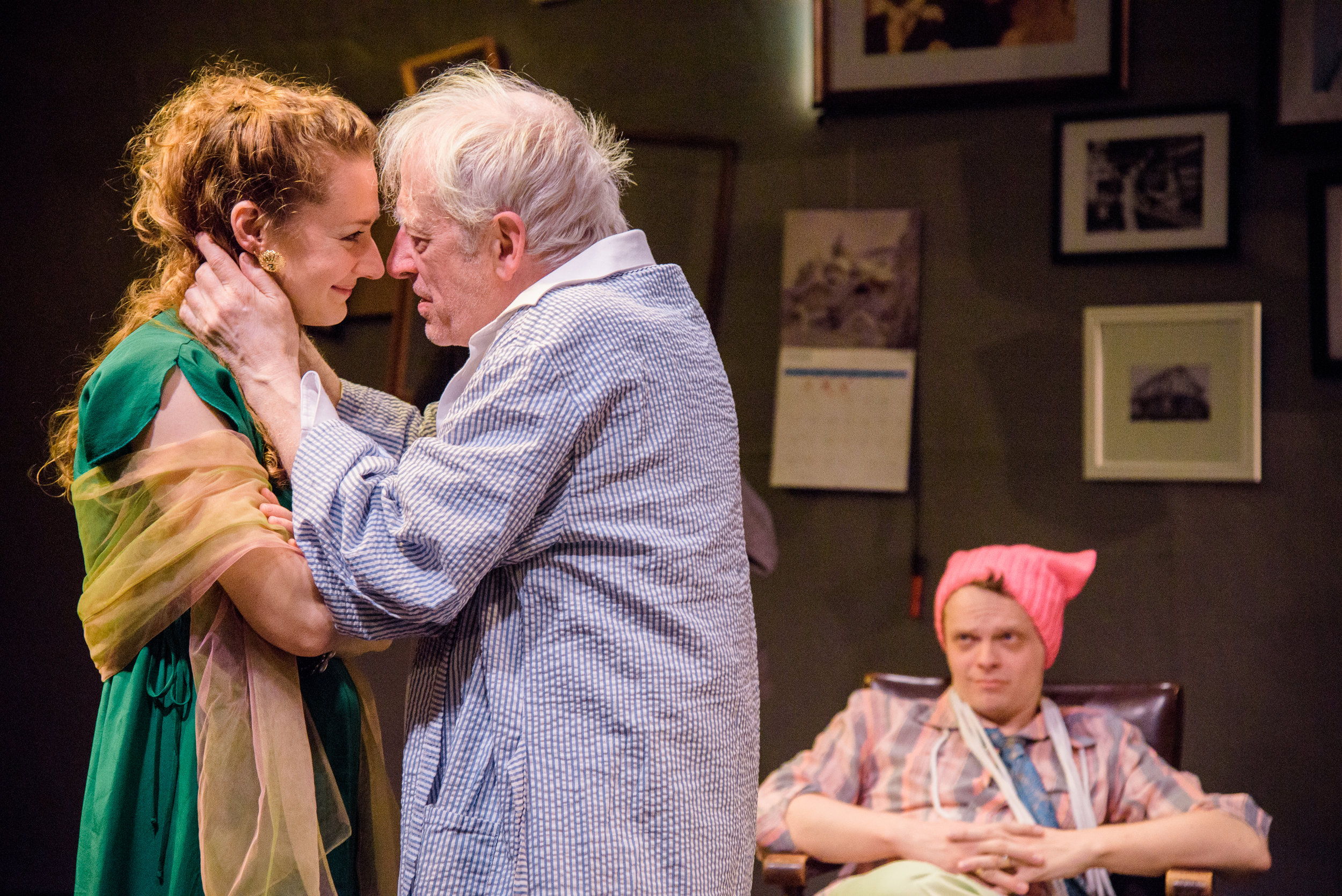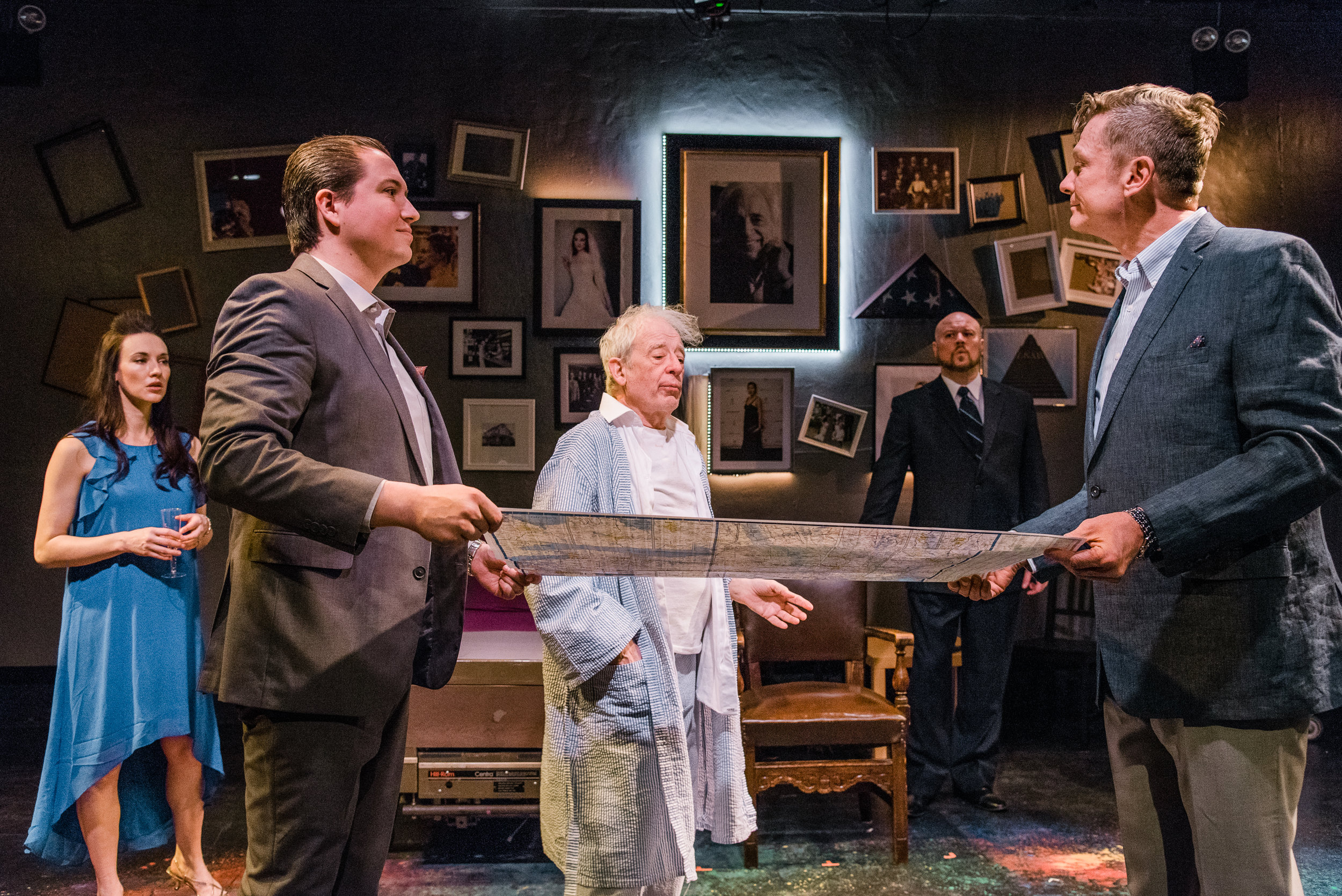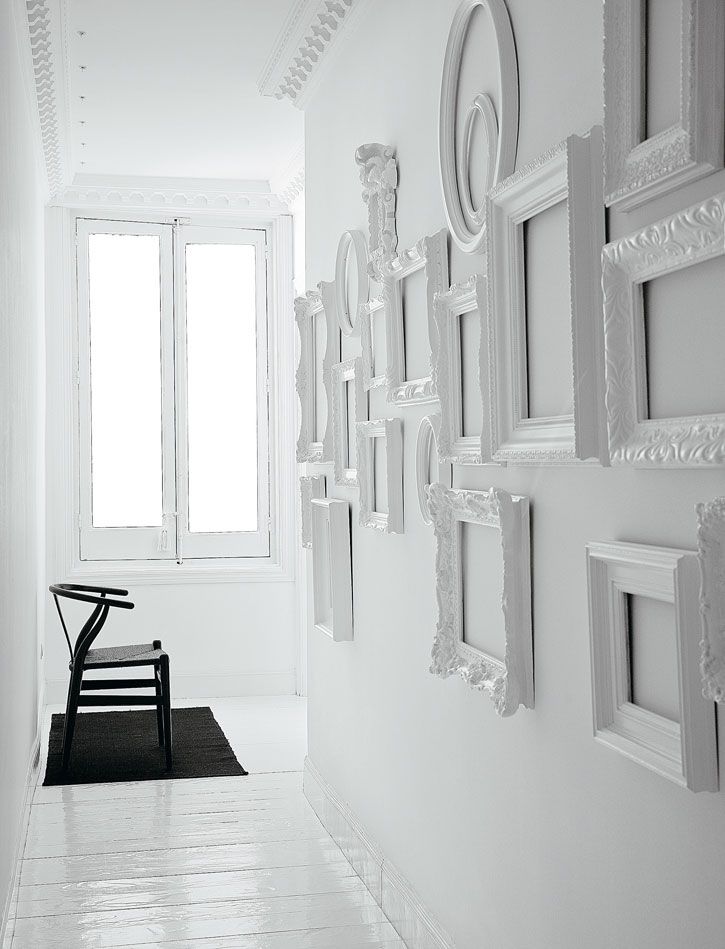Origins of King Lear Concept
When the Secret Theater approached me to direct Austin Pendleton in King Lear I was ecstatic. I loved the play and thought Austin would be a very compelling King Lear. I sat down and reread the play alone in my apartment; I wanted to make sure I could do justice to the play with a thrust stage and a very limited AEA showcase budget without sacrificing the play’s relevancy. Most importantly, I wanted to connect with the script and bring an honest Lear to the stage. King Lear can be done in so many ways because it encompasses so many themes it can seem daunting. I knew I had to find my King Lear.
After reading the script, there were two things that hit me most about the play. One was Lear’s madness; it reminded me of my Grandmother. I watched my grandmother go into the depths of dementia. When she was fully present, I loved making her laugh out loud and I would have my grandma back. Those precious moments became fewer and fewer as time went on. I would be in the room with her for an hour before she would see me for the first time. One minute she thought we were in Honduras, the next in Arizona. There were some moments that were comical, simply because the human heart had to find levity. Other times the pain was too much.
The second was his daughters (the only three women in this man’s world); it was so clear to me that they are the products of neglect and abuse. This reminded me of Donald Trump’s family: affluent and power-hungry, with the female members putting up with misogyny and inappropriate behavior for the sake of grasping power. It’s no wonder that two of the sisters in King Lear turned out to be exactly like their father; like the Trump daughters, they are products of the environment they grew up in.
Based on these two focal points, our King Lear would emphasize the family dynamics of a wealthy, abusive patriarch relinquishing his control of the family business while he struggles with the onset of Alzheimer’s. I decided to set Lear in contemporary New York and make him the head of a real estate empire. It was important to the story that we have real justification for the daughters’ actions to avoid the “evil stepsisters” trap. It was clear to me that Cordelia had a different mother than Goneril and Regan; I wanted to emphasize that biological difference by casting an Asian Cordelia.
As I researched Alzheimer’s I came across several videos that documented the effects (physical and emotional) the disease can take on the patients and their families. The erratic behavior, loss of memory and regression of the mind fit Lear perfectly. I thought the tragedy of Lear (like my Grandmother) would be greater if it was a death of the mind instead of the physical body. The play now became a memory play showing how an old man with Alzheimer’s remembers his life. As such, the play would have 2 timelines: the present in the assisted living facility and the past when Lear was king. As the play progressed the line between the past and present merged and Lear’s Alzheimer’s would get worse.
Working with our Dramaturge I decided to do a cutting of Lear that focused on the family and the loss of memory. By cutting most of the political and war references we came up with a very strong and tight script that also decreased the number of characters (from 24 to 14) and allowed for doubling, helping us stay within budget.
The set design was inspired by assisted living facilities. We used a hospital bed, a wheelchair and a crash cart to create Lear’s living quarters; these pieces were also used in the “memory” scenes to create the Dover cliffs, Lear’s throne and Gloucester’s bar table, respectively. My set designer was inspired by the idea of a memory play and he presented me with the idea of using empty picture frames to signify the loss of memory. We used framed family photos in the center of the back wall and as the frames branched out to the sides the pictures within would be crumpled or incomplete and the frames at the far reaches of the back wall would be empty entirely. This also helped establish the various locations in the play by allowing us to light individual photos of the Lear, Gloucester and the daughters so the audience would know whose house we were visiting. The set designer was also inspired by an image he had seen of a MRI scan of a brain with Alzheimer’s; we painted an abstract of this image on the stage floor. The floor looked like a Jackson Pollack painting of beauty in chaos.
The lighting was crucial to the past versus the present. The “present-day” lighting was flat hospital lighting with dull colors. The memory scenes were vivid and exciting. As Lear’s disease progressed the distinct lighting plots would start to combine and merge. We used gobos to break up the floor patterns for different scenes/locations and we had a separate gobo the projected the image of a hospital window; we used these different gobos simultaneously in the latter half of the production when Lear has reached Stage IV of his disease.
The costumes were inspired by the Trump family: high-end fashion for the men and women of the upper 1%. We costumed Edmund the Bastard as a blue-collar worker to further the idea that he was the outsider in the world. Throwing doctor coats over existing costumes made quick changes between the worlds very doable. The set assistants were dressed in scrubs so the scene changes could be quick and in full view of the audience as if orderlies were simply doing their jobs, scuttling around an old mad man wandering the halls of a facility. A key costume piece was Cordelia’s red coat (the only red costume piece in the production). Because our production replaced Lear’s physical death with a mental break, we had Lear enter in the final scene (set in the present-day assisted living facility) carrying Cordelia’s coat instead of her body. His mind had degenerated to the point where he believed she had died, even though the actress playing Cordelia was right in front of him. His guilt, like the Alzheimer’s, has overcome him. Lear goes into cardiac arrest and falls to the floor; the red coat lays on the stage like a pool of blood while his daughter watches him, unable to reach him as he has lost his mind.
The sound design was inspired by a Dateline video I found about a group that helps family members of Alzheimer’s patients understand the physical and mental challenges of the disease. Patients often hear a constant low buzzing or humming sound that makes it difficult to concentrate; we layered in a buzzing sound during key moments in the play when Lear faces an inflection point.
Another news segment I found talked about how potent music therapy can be for Alzheimer’s patients, especially when the music is from their earlier years. I wanted the music playing in the assisted living facility scenes to be music from Lear’s young adult years (circa-late 1960’s) so that his memories of past events (like the partitioning of his real estate “kingdom”) would be triggered by what he was hearing in present day. Edgar’s “Poor Tom” character became a Vietnam War vet who played “The Load” while panhandling.
When it came time to cast the production the actress I cast as Goneril was 7 months pregnant when we began rehearsals; having her visibly showing during the production made Lear’s cursing of her womb an even harsher offense and gave her treatment of him additional context. I also had the actor playing the Fool double as Lear’s doctor in the assisted living facility, raising the possibility that Lear’s memories where messy or incomplete and he was infusing people from the present into his recollections of the past.
I am very proud of this production and grateful to the cast and crew for dedicating their time and talents to this project. I also feel that my grandmother would look at it and be very proud. If you click here this will take you to a video slide show showing some of the production photos as well as the design inspiration for the production. To see more of my work simply go to albertobonilla-director-writer.com

